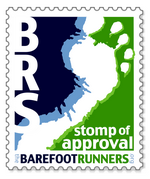 It is inevitable, and there is no way to escape it. If you are a runner you will one day walk out your front door to a nice clear morning and think that you are in for a great run. You will then round the corner to be met by a sharp and fierce wind that will hit you in the face like an upper cut from Tyson. You’ll doubt your run and think maybe it’s best to go back in. You are after all still at your house and given the gale force enemy you are thinking of facing, no one would blame you. The truth is the wind can be a great training tool for building strength and even speed, but you have to navigate it correctly to get the most out of it. There are tricks that can be employed to make the wind less of an enemy.
It is inevitable, and there is no way to escape it. If you are a runner you will one day walk out your front door to a nice clear morning and think that you are in for a great run. You will then round the corner to be met by a sharp and fierce wind that will hit you in the face like an upper cut from Tyson. You’ll doubt your run and think maybe it’s best to go back in. You are after all still at your house and given the gale force enemy you are thinking of facing, no one would blame you. The truth is the wind can be a great training tool for building strength and even speed, but you have to navigate it correctly to get the most out of it. There are tricks that can be employed to make the wind less of an enemy.
Running Into the Wind
There are a few ways to make this, one of the tougher ways to run, easier on you. The first rule of thumb is to tuck your chin and pull your arms in. These two actions make you smaller and more aerodynamic. You don’t put your chin on your chest or anything, and you still need to be able to pump your arms so you don’t pull them all the way in. You want your chin about halfway between parallel and perpendicular to the ground as this will put your forehead, the roundest part of your head, into the wind so it can cut through the winds and make things easier. If the wind is particularly strong or cold, you can tuck your chin deeper and let the top of your head take on the force, but it can slow you down a little as the craning of your neck can force you off of your ideal form. A side note is to be careful when wearing a hat. Tucking your chin too far will cause the bill of your hat to become a wind sail that will surely slow you down and cause strain on your neck. Remember not to over tuck, and you should be fine. Your arms will need to be pumping to help create forward motion so you want them at your sides, moving forward and backward in a very straight line – no crossing the body during this phase. Keep your thoughts focused on these two adjustments when facing the wind, and you will find the going a lot smoother.
Running With the Wind at Your Back
This one is the easiest and the most enjoyable. That is not to say there aren’t things you need to be mindful of. Running with a tail wind is usually enjoyable and always welcomed after you have been running into the wind so the typical rule of thumb is to enjoy it and use the wind to help you along as you recover from the strain of running into the wind. The one thing you really need to pay attention to is too much increase in pace while “taking it easy” with a tail wind. The wind can push you and really bring up your pace. The help is nice, but it can also tax your energy stores as you are running faster and using your muscles more than expected. It is a small point of concern, but if you’ve ever let the wind carry you along for a stretch and had to suddenly run without it or turn back into then you know how much the increase in pace can affect you. Your legs will suddenly feel fatigued and heavy and leave you fighting to continue at your desired pace for the day. A simple trick to help in pushing against the tail wind and controlling your pace is to sit your hips down and be upright. This is a very subtle move and one that should go mostly unnoticed in your form. The subtle shift will pull your weight slightly downward acting like a boat anchor in water. Doing this allows the wind to still help out but not push you too hard.
Running Across the Wind
An easier way of explaining this would be to say the wind is at your side, and this is quite possibly the toughest of the wind environments. The wind will be pushing you sideways as you are trying to move forward. This will cause you to start winding in a snake-like pattern instead of a straight line, which will cause you to waste a lot of energy as you fight it. As a runner you want to run in a straight line, and a side wind makes that nearly impossible so your first move will most likely be to turn into the wind a little so that you run against it. The thought is that this will give you your straight line, but this too is a very big waste of energy as you are really just fighting the wind in a different inefficient way. The best way to avoid a side wind is to tuck your chin down and into the wind. The move is sort of like putting your chin on the shoulder facing the wind but not looking directly to your side. If your face sitting forward and your shoulder make a ninety degree angle then you are looking for a forty-five degree range with a chin tuck. The next move is to bring your shoulder slightly forward as if you are about to ram into the wind for a good shoulder hit. Picture a football player about to deliver a big hit and you have the right idea. By tucking the chin and leaning with the shoulder you are bracing against the wind in a more natural manner that will work more cohesively with your running form. It will also act as a nice edge to cut through the wind. You should feel the wind hits you less and that you expend less energy as you will not be running on a giant squiggly line.
That’s it. It’s that easy. By making a few simple adjustments you can make a windy run a lot less trying and maybe even enjoyable. Unfortunately there is no trick for is cresting a hill into a crazy strong wind that suddenly stops you in your tracks. If you’ve ever done this or if you ever find yourself in the situation the best move is to just remind yourself that you’re not done with your run, and you have to start moving your feet again. It’s not the easiest thing to do, but with your newly acquired head wind techniques you can make it a little easier once you do get your feet moving again.
Embrace the wind, my friends, harness your inner Pooh Bear and maybe create a fun hum about it being quite a blustery day to get you through. Just keep telling yourself it’s good for you, it’s making you a better runner, and you’ll be just fine.





We’ve all run in the wind (or elected not to) but what an interesting idea to describe some techniques. Enjoyed the post, Jimmy. BTW, another good read on the subject of running is, “Why We Run” by Bernd Heinrich, a biologist and long distance runner. Lots of details.
Thanks Duncan! I’ll have to look that up for sure as I’ve not heard of it. Try out the stuff I wrote about and let me know how it goes up there in the bitter colds of Canada.